New School students congregated in the crowd of thousands of people last weekend for the first wave of protests against the Trump administration’s recent decision to repeal the Deferred Action for Childhood Arrivals (DACA) program. It was Saturday afternoon directly across from Trump International Hotel and Tower in Columbus Square where students, families and DACA recipients themselves gathered in support of the Obama-era policy established in 2012 that allows children—referred to as Dreamers—who were illegally brought to the U.S. to live and work legally for renewable two-year periods.
Rebecca Ruvalcaba, a sophomore at both Parsons and Lang, voiced her frustration at Trump’s decision. “I have both friends and family who DACA protects, and this was just not responsible for the government to do,” she said. “It feels like the U.S. is fighting against [DACA recipients]. This is the only country some of them have ever really known. It’s heart breaking.”
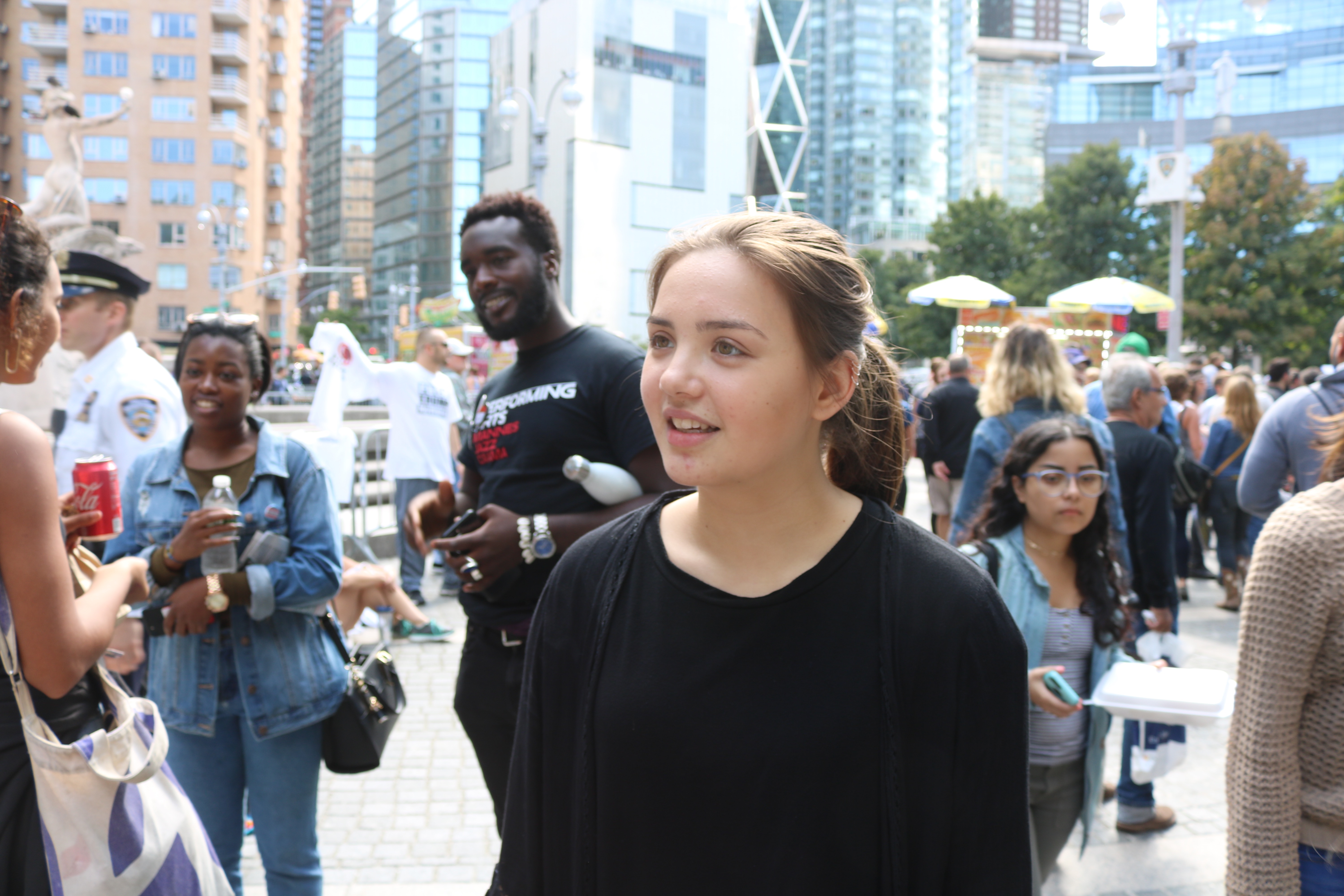
For Payton Grgurovic, an international student at the School of Drama, international identity helped her relate to the present situation. “As an international student, I’m in a very privileged position to be here, it’s a decision I’ve made,” she said. “I just feel there should be more international students, immigrants of different categories, supporting Dreamers and DACA…We’re all trying to work for the same thing.”
The rally was organized by Movimiento Cosecha who—according to their site—are “a non-violent movement fighting for permanent protection, dignity, and respect for the 11 million undocumented immigrants in the United States.” Part of their mission statement is the belief that direct action and economic non-cooperation have the ability to change what is politically possible.
The rally was Cosecha’s response to events that took place on Fifth Avenue outside Trump Tower last Tuesday, following Attorney General Jeff Sessions initial announcement of the Trump administration’s decision to rescind DACA. It was there the NYPD arrested 12 protesters sitting in front of Trump Tower, nine of whom were allegedly DACA recipients.
Later the day of the DACA decision, Trump tweeted that Congress had six months to legalize DACA and if they are unable to, he’ll revisit the issue. “For all of those (DACA) that are concerned about your status during the 6 month period, you have nothing to worry about — No action!” Trump tweeted two days later on Sept. 7. Despite the somewhat unclear nature of his comments on the issue, protesters still came out to express their defense of DACA and those protected by the program.
“Shame! Shame! Shame!” demonstrators chanted at people entering and exiting Trump’s Central Park building location. Families and groups of friends emerged from the train station waving signs together, some in English and others in Spanish.
“En nombre de la humanidad, nos negamos a aceptar a un estados unidos fascita,” a sign in the crowd was thrust up and down. It roughly translates to, “In the name of humanity, we refuse to accept a fascist America.” Other protesters and their signs demanded Congress pass the DREAM Act and allow Dreamers to stay, one sign even stating that no one is legal on stolen land. “Soy una immigrante,” one woman held up in the air in red ink. It means, “I am an immigrant,” followed by in English, “I am not an alien. I am a human being. I am an American.”
Margaret Galella, an English as a Second Language (ESL) teacher of 20 years in the New York City Public School system, expressed her concern for some of her Dreamer students. “Repealing DACA is unfair. These young adults have done nothing wrong,” Galella said. “[Dreamers] deserve the right to compassion and fair immigration laws. Several of my students were in my class scared and crying, thinking that they’re going to be deported.” Galella described the fear as something that trickles down from parents. Adults are fearful and unable to hide it from children who in turn become frightened themselves
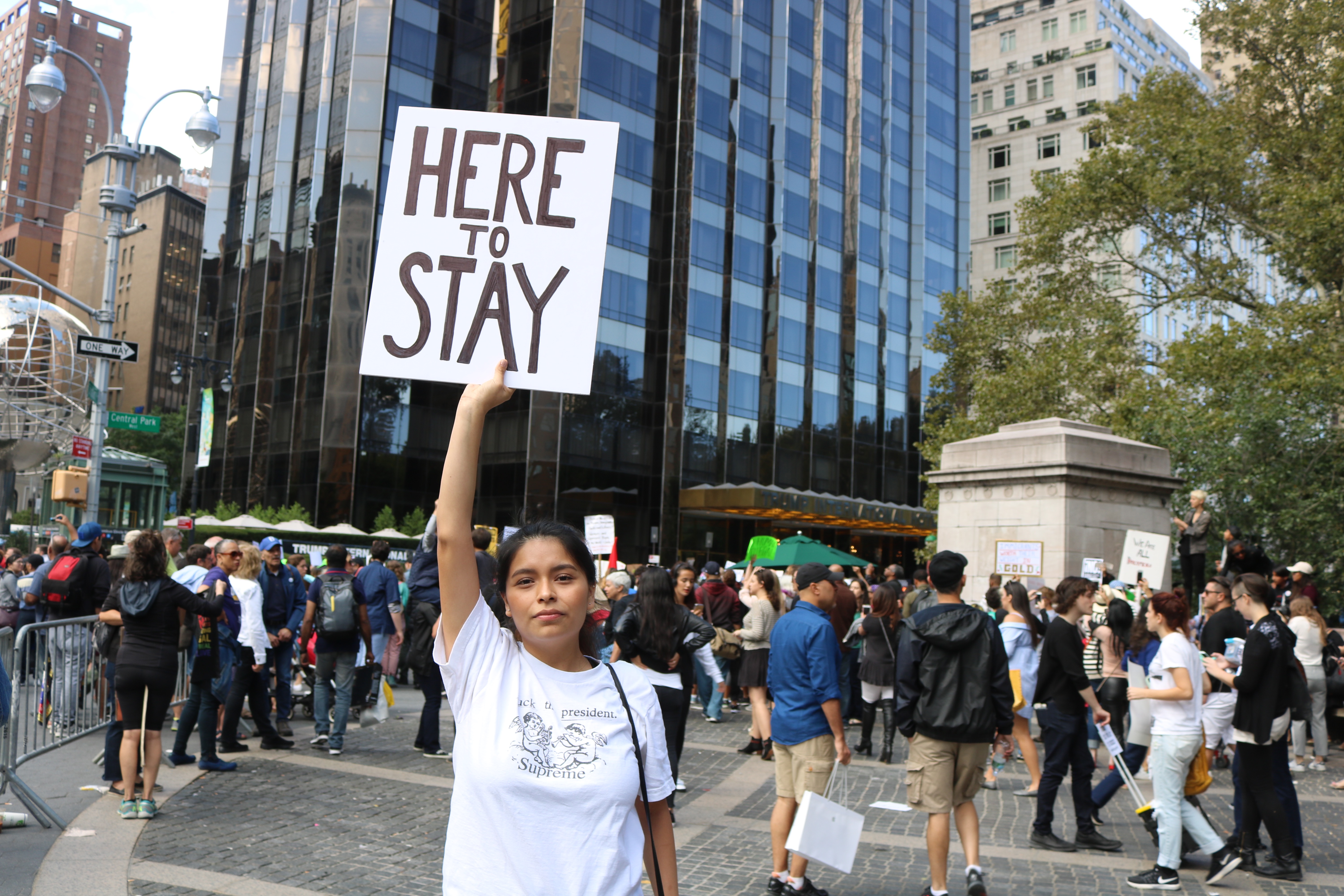
Lesly Paucar, 25, is a New Jersey resident and DACA recipient who came to the United States from Peru with her parents when she was two years old. It wasn’t until she was a teenager that Paucar discovered her legal status when she realized she couldn’t apply for college based on some state’s restrictions on undocumented students. In 2012, when the Obama administration passed the program, Paucar was able to apply for her DACA card—which she then received on Christmas day.
“It was the best feeling in the entire world to know that I can actually get a driver’s license,” Paucar said. “I can legally work, I can maybe buy a home. Help my mom. And it’s been almost all taken away from us.” And while Paucar acknowledged the big turn out of the rally, she suggested something as big as the Women’s March—which she attended in January—as the next step.
“[The Women’s March] was historic. Almost a million people showed up,” Paucar said. “If you really think about it, if it’s 800,000 of us, how many people do we know? How many people can we push to go to Washington D.C. and fight?”
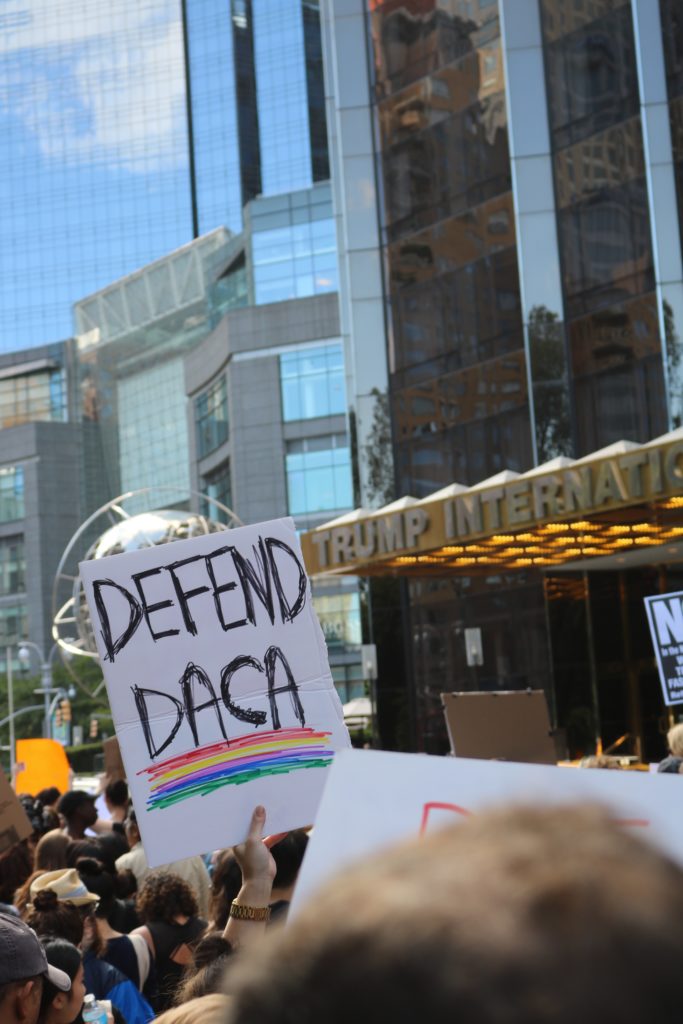
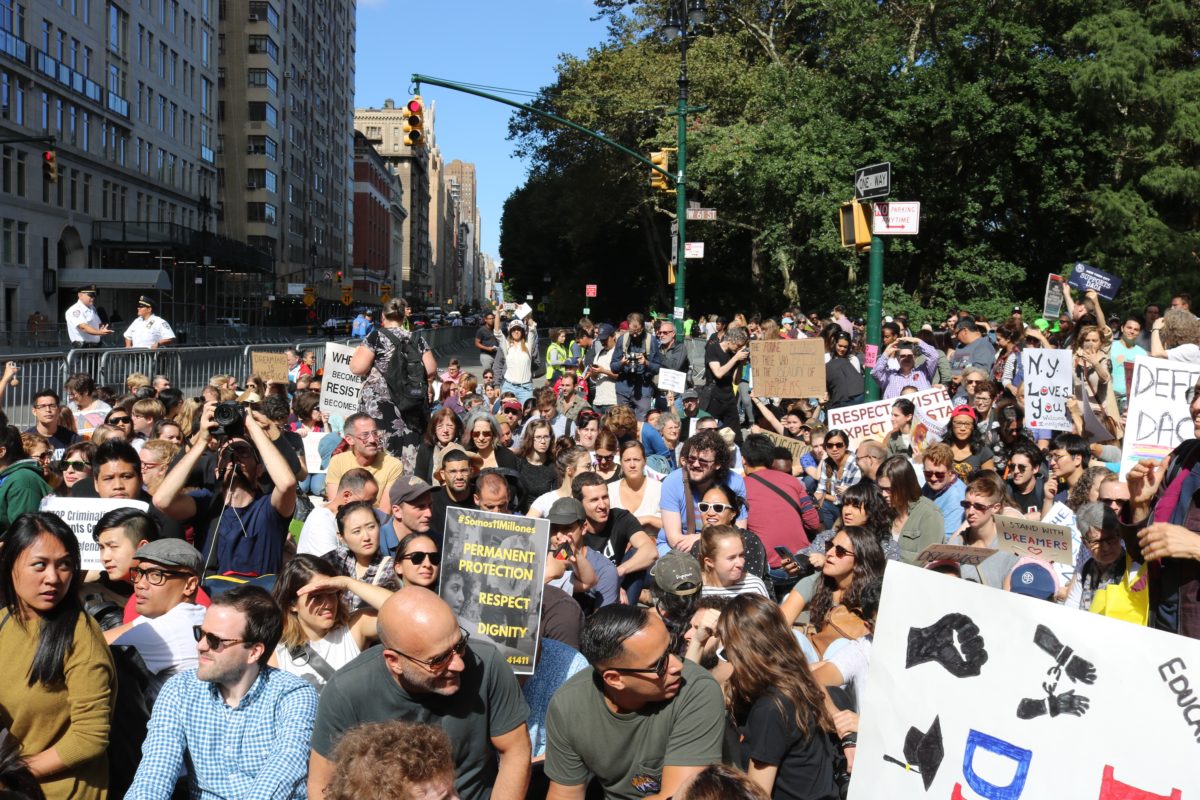
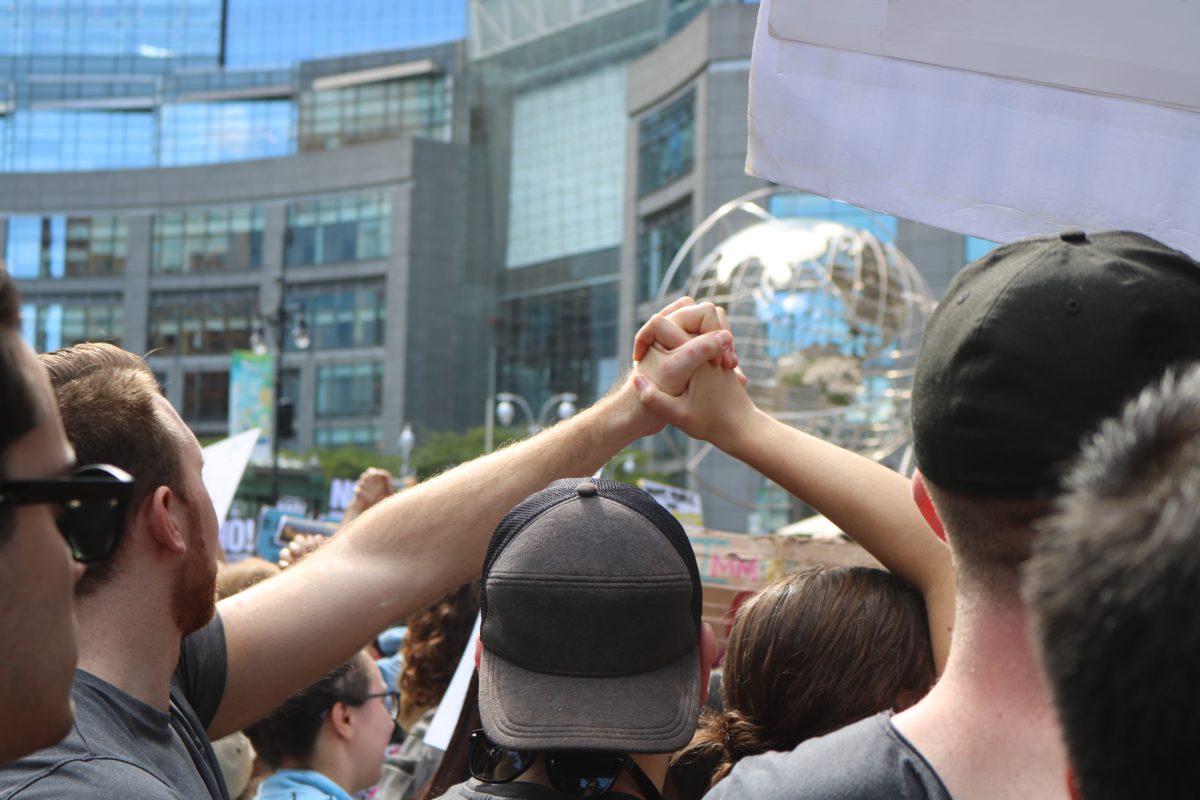
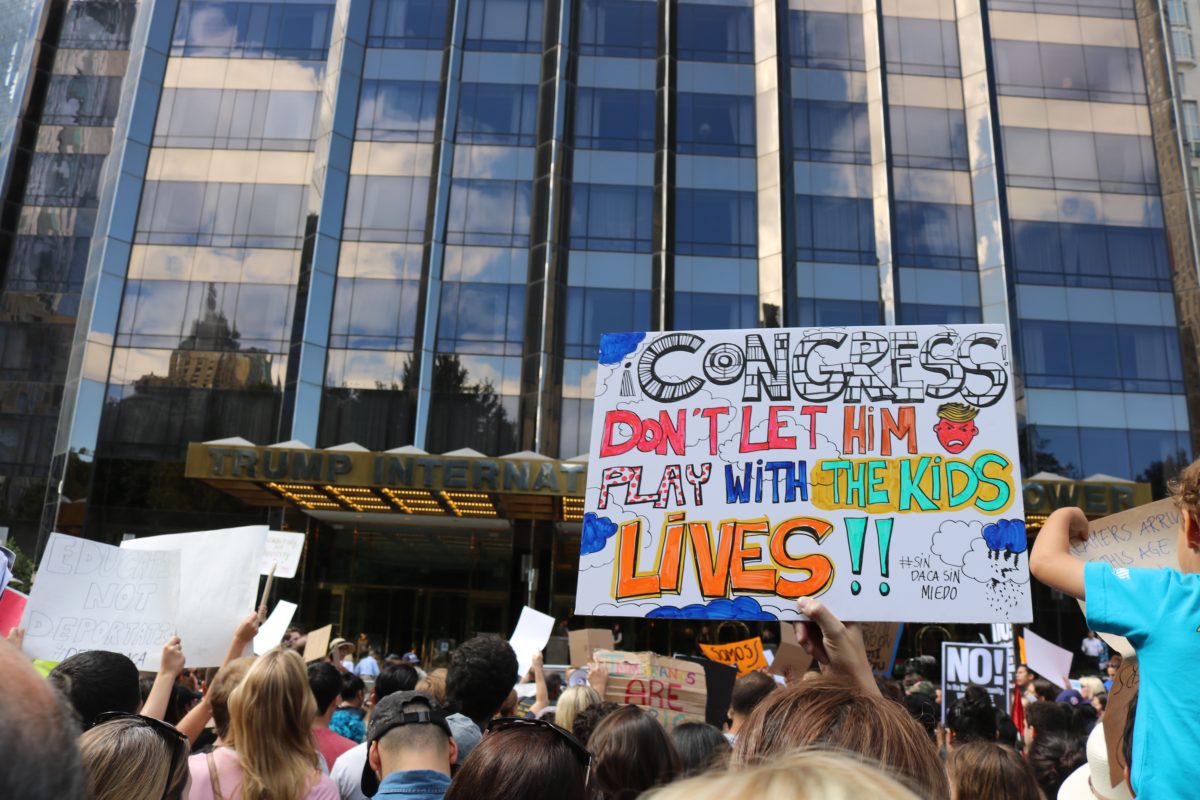
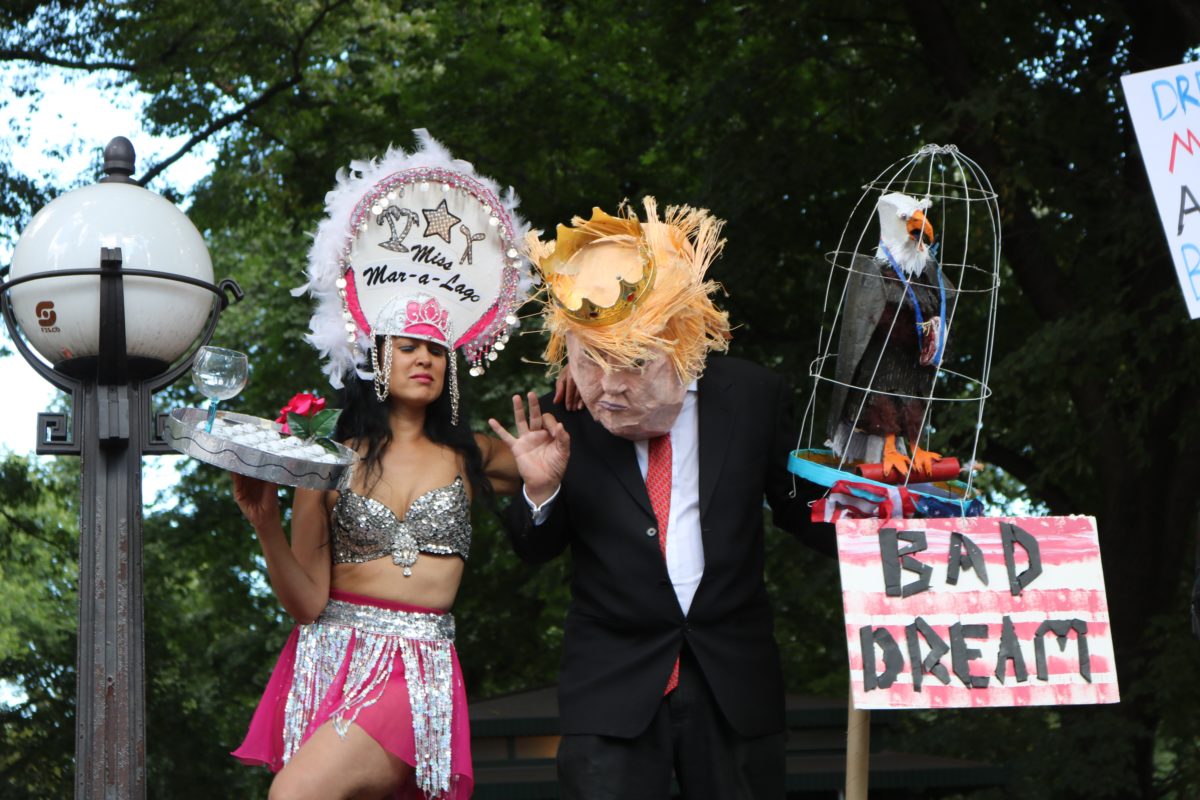
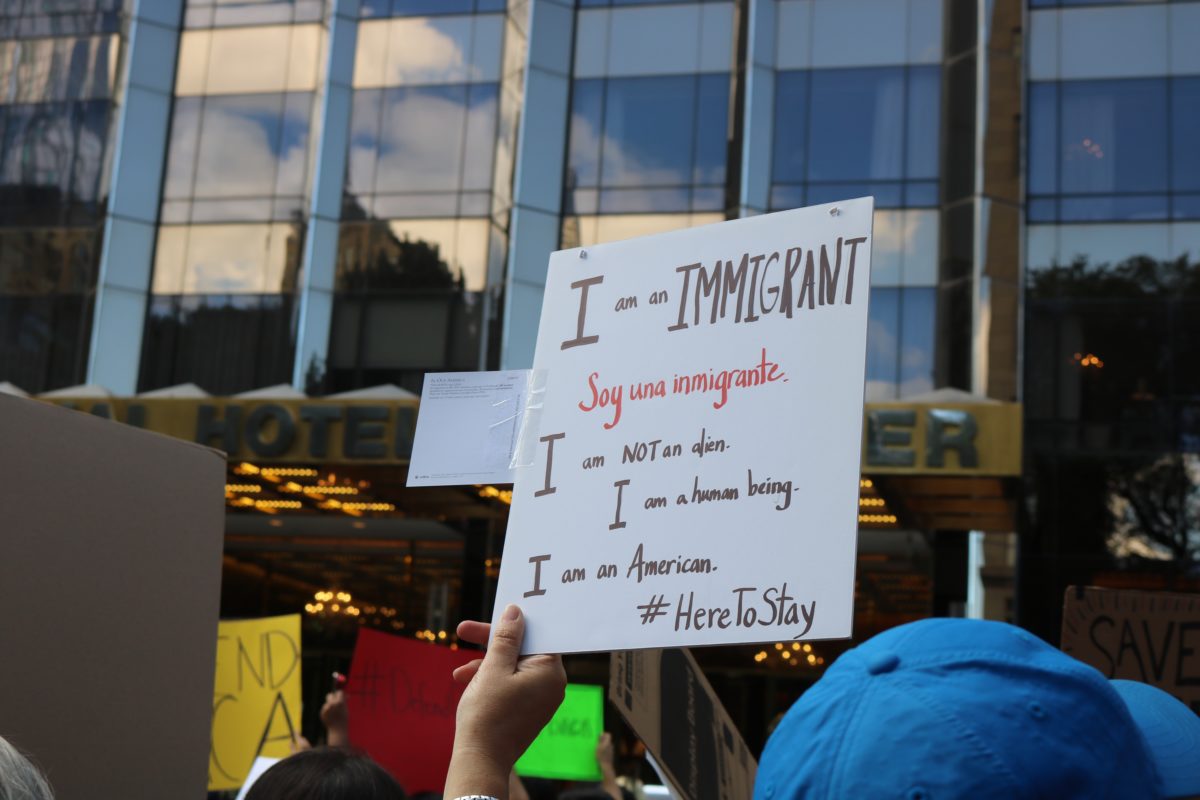
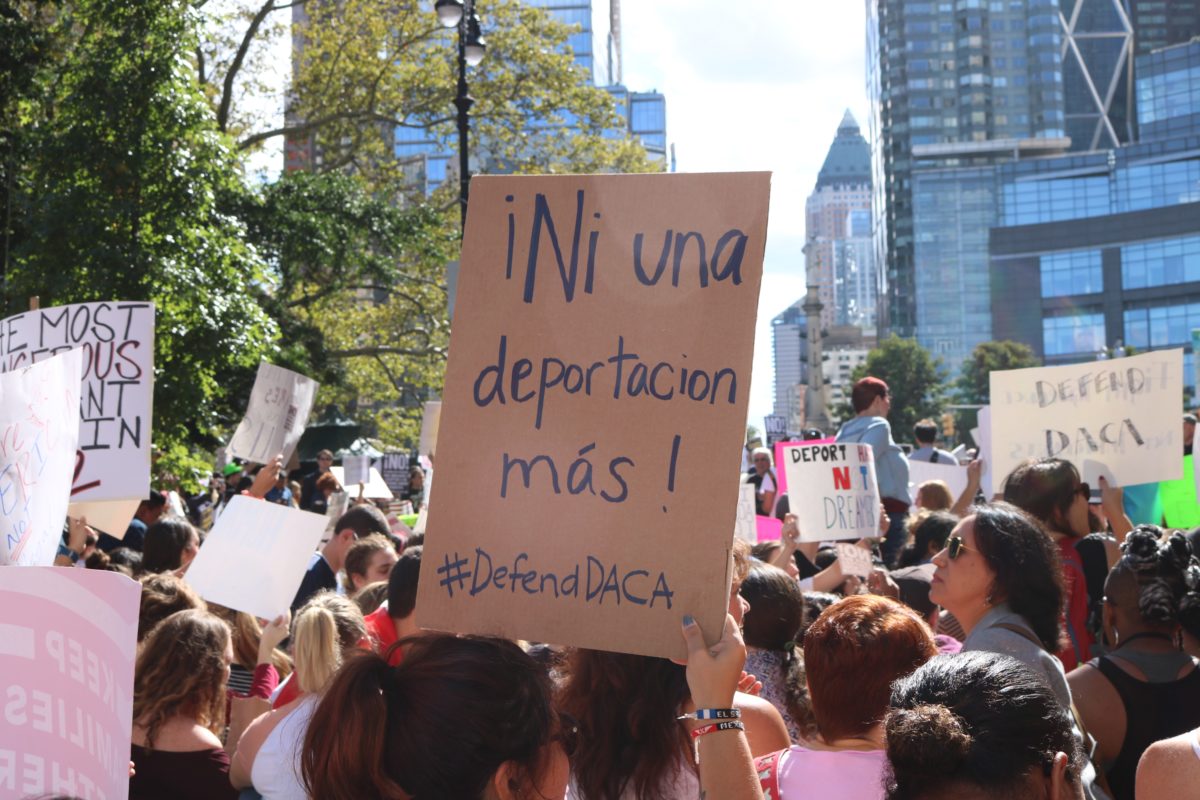
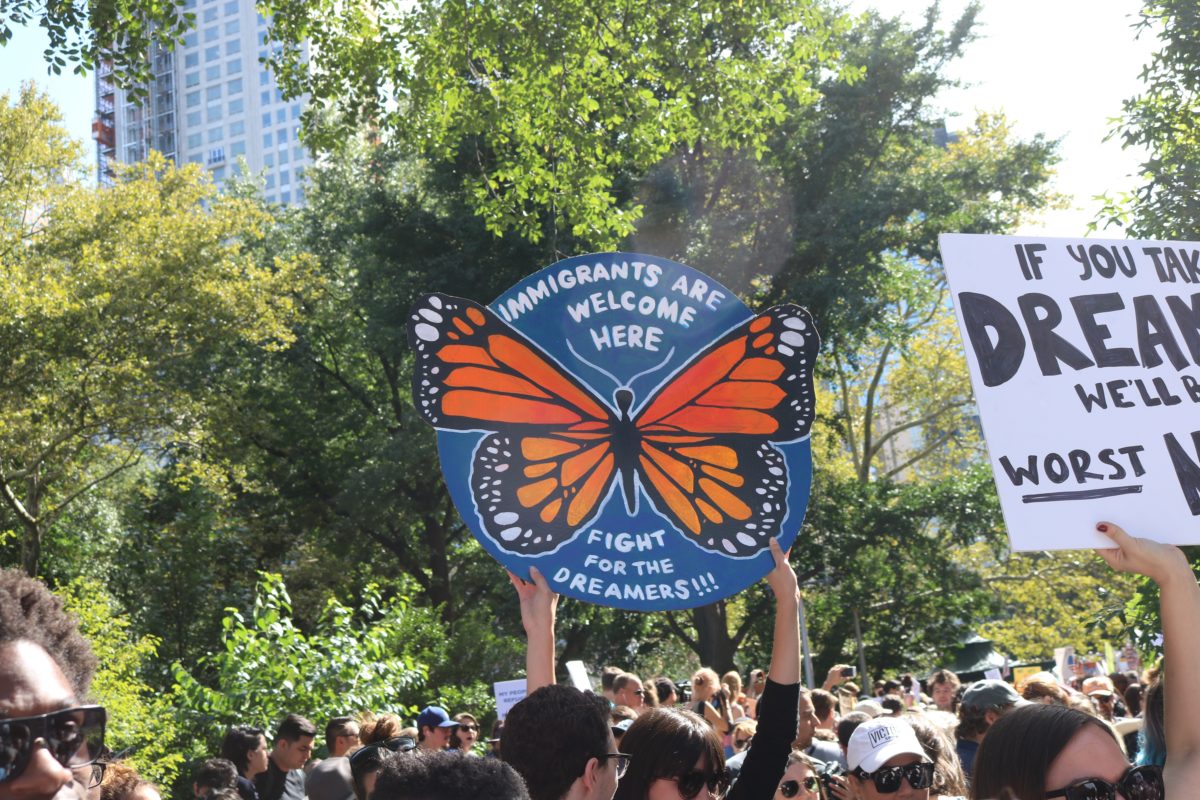
Photos by Orlando Mendiola.
Truman is the Editor-in-Chief for The New School Free Press and a senior in the Journalism + Design program at Lang. He has also contributed online content for both Interview Magazine and V Magazine, talking with musicians, directors and a variety of other artists. Born in raised in Oakland, California, he now lives in Bed Stuy with a witchy roommate who is always down to burn some candles with him.

